Social Innovation Business Models
Tamami KOMATSU
|
Following the empirical research done in the download reportComparative Analysis the work package «Stronger SI Concepts» (WP4) concentrates on the analysis and formulation of business models of social innovation. Taking stock of the 25 SI Business Case Studies, we performed a process of reverse engineering to extract the business models underlying social innovation. Reverse engineering is the application of tools and processes used to study new business ventures in comparison with existing ones. As such, it sheds further light on the broad characteristics of social innovation business models and their value creation mechanisms. The resulting evidence informed the creation of a revised business model canvas for social innovation and a typology of business models of social innovations.
In conclusion, we found that SIs were often able to tap into resources found in their local contexts, allowing them to grow by embedding their solution in a vast actor-network and cut down on costs and leverage inputs to maximize social value. The vast actor-network supporting SIs, along with the multiplicity of their value propositions, is at the core of the complexity of SI business models. Informed by our empirical findings, we created a modified version of the business model canvas, which includes the different features that social innovations present. |
Social Innovation differ from Traditional Business Models

What followsAs a result, SI Business models are multi-actor, constructed on the creation and monetization of social value. Similar to multi-sided business models, SIs have multiple 'customer' segments, typically divided into beneficiaries and paying customers, for whom tailored value propositions are made. Multi-sided business models are based on the delivery of a free-of-cost service for users who in turn form the basis of the value proposition for paying customers, e.g. user attention. Likewise, in SIs, social value propositions are often offered free-of-cost or at subsidized prices to beneficiaries. |
||||||||||||||||
|
In our research, we observed that while most social innovations excelled in creating networks of in-kind supporters they were less acute in creating a customer base and a suitable value proposition. Thus, the current challenge for mission-driven organizations is to understand how to monetize social value: a question that is framing the innovation need in social innovation business models today. It was also observed that as most social innovations are able to find sustainability thanks to heavy in-kind support, replicating and scaling these innovations could prove more tricky as sustainability is based on the social capital, know-how and resources found in the local context. |
Figure 1. |
||||||||||||||||
|
In conclusion to our analysis, we have observed the below clusters of characteristics that could lead towards typologies of SI business models, SIs that:
It must be noted, however, that SIs can fall into more than one cluster and that the above typologies are meant to serve as initial observations for further study. The typology of SI business models is also useful in identifying how SIs generate social value. As seen in our discussion, SIs generate social value in both the value proposition as well as in their value constellation; in other words, in the processes and choices of activities performed, who performs them and who supports them in their endeavours. Table 1 provides a brief summary of different social innovation business models and the process through which social value is generated and sustained. Examples from the SIMPACT Case Collection are also listed to provide case-based support. In conclusion, social innovations require a, or a combination of, complex business models to ease the tensions that arise between their pursuit of creating social value and remaining financially autonomous. However complex, social innovation business models have the potential of representing a corrective measure to the current failures in capitalism and the welfare state and hence represent an interesting focus of further study. |
Table 1. SI Business Models |
Building an SI Business Toolbox
Manuela CELI
|
The construction of a sound business model built around the specificities of SIs may become the doorway to the implementation of self-sustainable solutions. Considering this framework, the POLIMI team is currently developing a toolbox where the selection and the eventual implementation of new tools, is connected to the building blocks of the SI Business Model Canvas. Unlike other toolboxes for social innovation, the business model canvas is not simply one of the tools that can be used to support the generation of innovative solutions or the improvement of existing ones, but is the interface to access the whole toolset. The tools, coming primarily come from the fields of service design, business and impact assessment tools, are meant to provide a clear answer to the core question that each block poses to the innovators. The assembly of the building blocks and the construction of an overall coherent business model is the core objective of the toolbox, which has been conceived to combine the traditional analytical perspective with a designerly approach. It can be used at the same time to generate new solutions and assess and refine existing ones including three different categories of users: innovators, intermediaries and investors (figure right). As the research project is still on going, the construction of the toolbox is still in progress. During the 3rd Project Progress Meeting held in Milan the 16th to 18th May 2016, we had a daylong workshop with external experts coming from five European countries to gather feedback and critics on the SI Business Toolbox ratio. We are also partnering with one of the analysed social ventures, winner of the European Social Innovation Competition, to experiment the use of the toolkit so as to test, assess and improve it before the release of its final version, scheduled for the end of 2016. |
Figure 1. Toolbox users & main objectives |
SIMPACT SI Business Toolbox Workshop:
An Evaluation with External Experts
Francesca RIZZO
|
On the 18th of May the Politecnico of Milano - Department of Design - hosted the SIMPACT workshop on the evaluation of the business toolbox for innovators and intermediaries. The panel of experts was composed of different expertise coming from the research field as well as from the field of practitioners, intermediaries and municipalities. The workshop was organised into main blocks. The first block was devoted to the discussion of SIMPACT's main findings. Judith TERSTRIEP introduced SIMPACT project, it's rational and proceeding. Tamami KOMATSU presented the results derived from the in-depth analysis of SIMPACT's 26 business case studies. Results mainly illustrated the peculiarities of social innovation business models, i.e.:
|
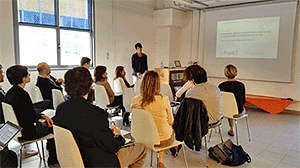
Expert Panel
|
|
|
On the basis of these peculiarities a new proposal for a modified canvas for SI business models was proposed. The modified canvas takes into account the peculiarities discussed above to create a framework for mapping the complexities of SIs. It pivots on the creation of social value, which in social innovations is produced on both sides of the canvas. Boxes were also added to concentrate on the social problem that the innovator is facing, the found solution compared to existing alternatives and the governance structure that encompasses it. |
Social value |
|
|
As most social innovations present a divergence in allocation of cost, use and benefit and hence multiple value propositions, separate boxes were made for the social and commercial value proposition, as well as separate boxes for beneficiaries and financing supporters (i.e. investors, funders, donors, paying customers, etc.). Lastly, we emphasized the role of in-kind supporters in SI Business Models as key partners and resource providers. The discussion that followed focused on providing constructive feedback of the research results. Two questions were raised:
The panel experts considered the business case study results as interesting and original. They discussed the fact that some of the results challenge the general assumptions on social innovation as they are based on data from reality. However, the derived business model typology was assessed as being too complex. |
Multiple value propositions |
|
|
In order to make them beneficial for social innovators, intermediaries and investors, a simplification was suggested. In particular, the following recommendations were drawn up by the expert panel:
|
Recommendations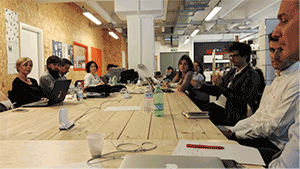
|
|
|
The second block of the workshop was devoted to the presentation and discussion of the SIMPACT SI business toolbox. and experts where invited to express their opinion on the SIMPACT Toolbox. Alessandro Deserti introduced the SI business toolbox: rationale, users and objectives. A set of questions led the discussion:
|
||
|
In general experts reported that even though many toolboxes are already available the idea of having one to support SI designers/developers from the point of the economic sustainability is interesting and original. However, the toolbox organised around the business model canvas is complicated and it requires a lot of resources to be used. Forasmuch, the organisation of a series of tools on the different area of the canvas is helpful to support innovators move from the stage of design to that of implementation of a SI solution. The toolbox as it is conceived should be of great support and use in formal education contexts. Experts suggest also to consider the possibility of exploiting the SIMPACT toolbox as an education tool in universities. In this respect, it would be interesting to link the toolbox with the SIMPACT cases study. Also experts suggest to develop an example of use of the toolbox on one of the SIMPACT cases. Other toolboxes are delivered with handbooks that support their use in different formal and informal contexts of education (from school and universities to intermediaries). Another possibility is to link the use of the toolbox with the use of a self-assessment analysis. In this way, users would be aware of their level of knowledge and the information they need to use the toolbox in the right way. Despite, the toolbox should take into account the different levels of expertise people have with the tools, as well as, in general, the knowledge and expertise people have on economic sustainability. One final suggestion was to take into account the possibility of designing the toolbox for different levels of expertise: from a simplified to a very complex version. |
SI Business Toolbox - Feedback from the Experts |
Summary of selected Results
Bastian PELKA, Tamami KOMATSU & Manuela CELI
Existing forms of Social InnovationIn the report download report«Existing forms of SI» (Part I), the authors discuss the processes of SI and business models that underlie them, as discussed above. In regard to SI processes, the authors compare the differences and the similarities between technological and social innovation. The results show that the two typologies differ along 4 main dimensions: (i) persude aims, (ii) segmentation of the targets, (iii) innovation paradigm, and (iv) expected impacts. The results of the comparison were then analysed against the results of download reportSIMPACT's empirical findings (Terstriep et al., 2015). What emerged is a significant contradiction between the literature review and the empirical findings on the processes of SI development. Moreover, while the literature review illustrated that there is no difference between technological and social innovation development processes, SIMPACT's case studies indicated the opposite. The report discusses this contradiction and delineates a series of specific differences between social and technological innovation in terms of their respective development processes. Considering the specificity of the SI process and the complexity of SI Business Models emerging from the analysis of Part I, the report download report«Existing Forms of SI» (Part II) offers, a deeper, multidisciplinary study to advance the understanding of the different factors influencing the specificities of the model. The collection of essays describes and analyzes the dynamic aspects of SI connected to its peculiar development process which is affected by: the scarcity of resources in R&D compared to technological innovation; the lack, in SI, of a culture of prototyping and trial and error; the lack of specific vertical knowledge and transversal cross-sector knowledge; and the relatively little importance that SI lends to economic value compared to social value and immediate impact which in turn leads to complex SI business models. Criteria &Recommnendations to Strengthen SIThe report download report«Criteria & Recommendations to Strengthen SI» functions as a funnel between the project's empirical findings and the business toolbox, developed towards the end of the project. While download reportSIMPACT's empirical report displays the functioning of social innovations (e.g. legal forms, actors' relationships, production factors and economic circumstances) and the business toolbox will compile numerous instruments for the economic support of social innovations (e.g. business plans, resource plans, self-analysis tools), this report analyses the context variables of socially innovative initiatives and condenses them into a self-analysis questionnaire. For this purpose, the report initially focuses on existing models for describing the «context» resp. «ecosystems» of social innovations. However, the authors conclude that none of the examined models considers the preliminary empirically determined context components to an adequate extent and thus suggest adapting a context model derived from the analysis of media systems to the requirements of the exploration of social innovations. As a result, they introduce social innovation as beging embedded in four layers of context which affect social innovation inwardly and have to be perforated outwardly in order to initialize diffusion processes. The report ends with a catalogue of questions which can be used by social innovators to examine the context of "their" social innovation with the aim to grasp existing solutions as well as the connected interests, actors and system relations. In late 2016, SIMPACT will with its SI business toolbox introduce a range of instruments which can be used to follow up on the inquiries of context to improve the economic underpinnings of social innovations. |
Recent Reports
Existing forms of SI - SI Processes & Business Models (Part I)
Existing forms of SI - Dynamics & Features influencing SI Processes & Business Models (Part II)
Criteria & Recommendations to Strengthen SI |
In Short
|
The SINNERGIAK team published a new working paper: «Social Innovation Regimes - An Exploratory Framework to measure Social Innovation» Abstract: The development of social innovation indicators is a pending task in the analysis of innovative processes. There are diverse perspectives that suggest the application of indicators at different measurement levels: the individualistic approach, the regional/national approach, and the organizational approach. The present working paper promotes the notion of Social Innovation Regime (SIR) with the purpose of developing an integrated perspective of the mentioned levels through a series of social innovation indicators. This perspective seeks to understand the interrelationship between social innovation contexts (meso level - regional level) and social innovation dynamics (micro level - organizational level). Therefore, the SIR suggests a system of indicators to explore a new way of that measuring social innovation. |
New SIMPACT Working Paper
Volume 2016 Issue 1 |
|
|
The symposium «Governance, Collective Action and Social Innovation: Rediscovering the Boundaries of Sustainable Cooperation» was held during the EURAM - European Academy of Management annual conference in Paris. Moderated by Sharam Alijani (NEOMA Business School), the panelists Dieter Rehfeld (IAT, Germany, SIMPACT), William Sun (Leeds Beckett University, United Kingdom) and Thomas Clarke (University of Technology Sydney, Australia) had the opportunity to discuss the themes proposed by the conference organisers with a special reference to the SIMPACT project. The symposium has provided the opportunity for researchers and practitioners, both inside and outside the SIMPACT project, to tackle upon the complex nature of social innovation, its trajectory and dynamics. Rehfeld and Alijani underlined the pivotal role of social innovators in accelerating social transformation in response to unfulfilled social demands. The emphasis on the principles, components and objectives of social innovation, as described in the SIMPACT's «Comparative Report on Social Innovation», shed further light on the role of social innovators, investors, intermediaries, and policymakers in conceiving and implementing collective solutions to cope with social exclusion and disempowerment. The panelists and the symposium organisers have expressed their desire to continue the dialog on ?governance, collective action and social innovation? by inviting social innovators, investors, and numerous social intermediaries to participate in the conferences organised by the SIMPACT consortium and the 2017 EURAM Conference in Glasgow. |
SIMPACT @ EURAM 2016
Paris, June 1-4, 2016 |
|
|
Policymakers rank their interest into a new topic to the degree to which such topic has impact on economic growth. The more economic growth a topic can generate, the more interest it will receive. The national accounts offer the possible to measure impact on economic growth. It is clear for a project such as SIMPACT that it should be investigated to which degree social innovation can be integrated into a national accounts framework. The team from TNO investigated this issue and published a report with some first results. On June 2nd, these results were presented and discussed during a datalab-session in Brussels. The participants to this datalab were specialists from the SIMPACT-team, experts from Eurostat, the Belgian Planning Bureau, the European Commission and another EU-project. The datalab helped to assess the statements made by TNO. TNO presented the main line of reasoning to the datalab-participants. In fact there were two lines of reasoning. The first is that most information on social innovation can be found in several topics of the national accounts. The main issue is however to separate the data on social innovations. The common opinion was that at best, there could only be a partial image of social innovation in current national accounts. The report provided several examples of social innovation and what elements of these social innovations could be traced back into national accounts. The second line of reasoning is that you should not only look at the current inputs and outputs covered by national accounts. Social innovations have an objective, that is to improve the human and social capital of persons (and therefore of societies). Statistical offices have developed techniques to cover information on new topics with satellite accounts. Such an approach can help to identify the impact of social innovation. A lively discussion followed on what such a set of satellite accounts could deliver as insight on social innovation. The effort by national statistical offices will be considerable to develop such insights. Eurostat offered a possible third kind of approach to national accounts, next to satellite accounts. National accounts can also be brought into a systems perspectives. Social innovations can help to improve the resilience of systems. This approach is currently in discussion. The datalab led to some new directions for the TNO-team. An updated report will follow soon. The outcome is that more insight into social innovation in national accounts is a possibility, but will require significant efforts by statistical offices. Policy makers will not quickly be served on this issue. |
SIMPACT Datalab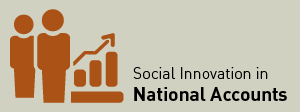
Brussels, June 2, 2016 Example
|
Upcomming Events
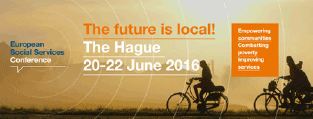
24th European Social Services Conference
20 -22 June 2016
World Forum, The Hague, NL
The 24th European Social Services Conference «The future is local! Empowering communities, combatting poverty, improving services» will explore how public services can collaborate more effectively with local communities and their citizens in combatting poverty and social exclusion. The ESSC programme provides a strategic discussion through its plenary sessions involving ministers, academics and leading professionals while facilitating an extensive policy and practice workshop programme with over 24 knowledge-sharing sessions on a wide range of issues. With over 24 knowledge-sharing sessions on a wide range of issues, the conference workshops provide a valuable opportunity for those facing common challenges in different regions to share their experience, learning and examples of best practice.
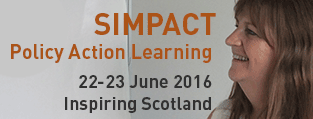
SIMPACT Policy Action Learning
22-23 June 2016
Inspiring Scotland, Edinburgh, UK
How can policymakers create an ecosystem capable of stimulating, resourcing and sustaining social innovation? Practitioners from the Basque Country, Czech Republic, England, Poland and Scotland have been working with SIMPACT partners led by the University of Bath as an «action learning» group, sharing dilemmas from their own experiences as well as successes. Its aim is to understand the radically different types of policy intervention required to address deeply-embedded social and economic problems through effective partnerships with wider stakeholders. Following earlier meetings in Vienna and Bilbao, Inspiring Scotland will be hosting the group's next event in Edinburgh on 22-23 June.
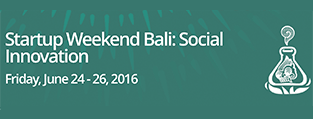
Startup Weekend Bali: Social Innovation
24-26 June 2016
Ubud, Bali
Organised by Hubud, in partnership with Kopernik, this time around, it's going to be all about social impact and innovation. If you have startup ideas relating to social entrepreneurship, tech for good, social impact and sustainable solutions ... then this one's for you. Let's catalyse change with action! Join us and we'll help you launch your social innovation startups in 54 hours. Whether you are looking for feedback on an idea, a co-founder, specific skill sets, or a team to help you execute, Startup Weekends gives you the perfect environment to test your idea and take the first steps towards launching your own startup
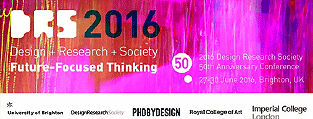
50th Anniversary DRS Conference
27-30 June 2016
Brighton, UK
DRS2016 considers how design research can help us address the problems we face now and the challenges that lie ahead. SIMPACT's POLIMI team will present the role of design competences in social innovation drawing from the findings of the comparative analysis of the SIMPACT SI Business Case and Biography Collection. Research questions addressed are: How can design research help frame and address the societal problems that face us? How can design research be a creative and active force for rethinking ideas about Design? How can design research shape our lives in more responsible, meaningful, and open ways?

Service Design South 2016
27 June - 8 July 2016
Siracusa, IT
A call for all social innovators and entrepreneurs developing and running services that make a difference. A two weeks intense training course on the theory and practice of service design thinking. An immersive learning experience that combines an international Summer school to a holiday opportunity in the heart of Mediterranean culture. Designing services in Sicily means challenging your professional capacity to generate value where it is most needed. The course attracts international professionals coming from different backgrounds: design disciplines, business practices, public sector services, social sciences and entrepreneurial community. During the first week participants will learn and exchange tools, methods and approaches to expand their design process and creative mindset. During the second week participants will be introduced to 3 real clients with a service design brief in order to apply in practice all the learning from the first week. Learning by doing, thinking and making: 60 hours of full immersion, team working, workshops and peer led sessions.

SIMPACT - 3rd SI Stakeholder Workshop
30 June 2016
CEPS, Brussels, BE
SIMPACT will host its third - and final - stakeholder involvement workshop on 30th June 2016 at CEPS office, Brussels. Invited external experts - representing social entrepreneurs, social policy, welfare institutions and networks of vulnerable people, will come together in a one day workshop, facilitated by TUDO in order to discuss latest outcomes of SIMPACT research and development. The workshop will be dedicated towards reviewing SIMPACT's latest empirical results and the toolboxes for social entrepreneuers and policymakers that are currently developed by the consortium. Participating stallholders and experts will have the possibility to give feedback on these results and products and to actively influence the project outputs. There are still travel grants available for interested experts! If you are interested in participating in this workshop on 30th June and want to discuss SIMPACT's results, please send an e-mail to Bastian PELKA
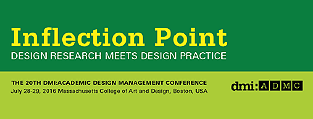
Academic Design Management Conference
28 - 29 July 2016
Massachusetts College of Art & Design, Boston, USA
SIMPACT's POLIMI team will present the results of the Social Innovation Business Model analysis and the development of the SI Business Toolbox in the track on Society: Design and Design Management for Social Innovation. This track explores three facets of design for human welfare: sustainable design, design in health/wellness, and issues of design in justice. The sustainable design track seeks to understand the potential influence and economic impact of implementing and adopting sustainable resource management practices. The health and wellness track addresses the topics of active aging, behavioral change, and the shifting attitudes around well-being. The justice track explores the role of design in all facets of human justice: age, racial, economic, gender, and criminal justice.
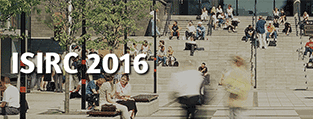
ISIRC 2016
5-7 September 2016
Glasgow Caledonian University, Glasgow, Scotland
ISIRC is the world's leading interdisciplinary social innovation research conference. The conference brings together scholars from across the globe to discuss social innovation from a variety of perspectives. This year the focus is on «SOCIAL INNOVATION IN THE 21ST CENTURY: BEYOND WELFARE CAPITALISM?». SIMPACT and CrESSI partners organise a one-day session on the «Economic Underpinning of Social Innovation»: There has been a considerable increase in public interest in social innovation over the last year, which calls for conceptual reflection by economists, sociologists, political scientists and philosophers. The panel focuses on the conceptual foundations of social innovation and its place and implication for the political economy of regions, nation states and supra-national entity such as the EU.
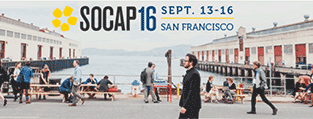
SOCAP 2016
13-16 September 2016
Fort Mason Center, San Francisco CA, USA
SOCAP16 will gather impact investors, social entrepreneurs, foundations, corporations, global nonprofits, and other valuable strangers all contributing to a vibrant marketplace for socially, environmentally and economically sustainable solutions. SOCAP programming starts fresh each year as we scout the growing landscape of social capital, seeking out the leading thinking on innovative investing and entrepreneurship for impact. SOCAP16 programming highlights recurring themes and emerging conversations from the impact community around the world. Attendees come to network, learn, and share. Themes covered comprise Impact Investing, Meaning, Neighborhood Economics, Cities: Centers for Change, Inclusive Entrepreneurship, Clean Energy for All, Sustainable Food and Country Context
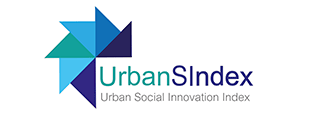
Social Innovation in the Urban Context
6 - 7 October 2016
San Sebastián, Spain
Members of the project URBANSINDEX (Sinnergiak, National Institute of Public Administration (INAP) and the University Rey Juan Carlos) will be hosting the Conference Social Innovation in the Urban Context, which will be held in San Sebastián during the 7-8 of October, 2016. The purpose of the conference will be to discuss different perspectives and cases about dynamics of SI inside cities. This conference will make use of the evaluation and conceptualization of tools and indicators developed inside the URBANSINDEX project to measure the impact of Social Innovation initiatives in cities. The conference will count with the participation of different experts inside the SIMPACT project.
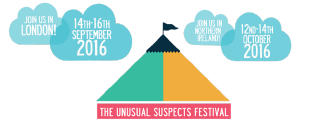
Unusual Suspects Festival
14 - 16 September // 12 - 14 October 2016
London, UK // Northern Ireland
The Unusual Suspects Festival is back! After two successful festivals in London in 2014 and Glasgow in 2015, SIX is delighted to announce that there will not just be one, but two festivals in 2016. A three-day festival of ideas, solutions and debate exploring what happens when social innovation meets collaboration and how together we can meet some of society?s most pressing challenges. The Festival brings people together who would not usually work together, facilitating serendipity between organisations and people, who would otherwise remain unconnected. It provides a catalyst for real social change. In both cities, you can expect three days of ideas, solutions and debate all exploring what happens when social innovation meets collaboration and how together we can meet some of society's most pressing challenges.

SIMPACT Final Conference
November 2016
Brussels, BE
SIMPACT's final conference will be held mid November 2016 jointly with the «1st European SI Policy Forum». The conference will gather social innovators, investors, intermedKaries, policymakers, academia and other interested stakeholders engaged in social innovation. Join us there! We are looking forward to discuss the future prospects of social innovation and its economic underpinnings with you. Further details will be made available shortly.

